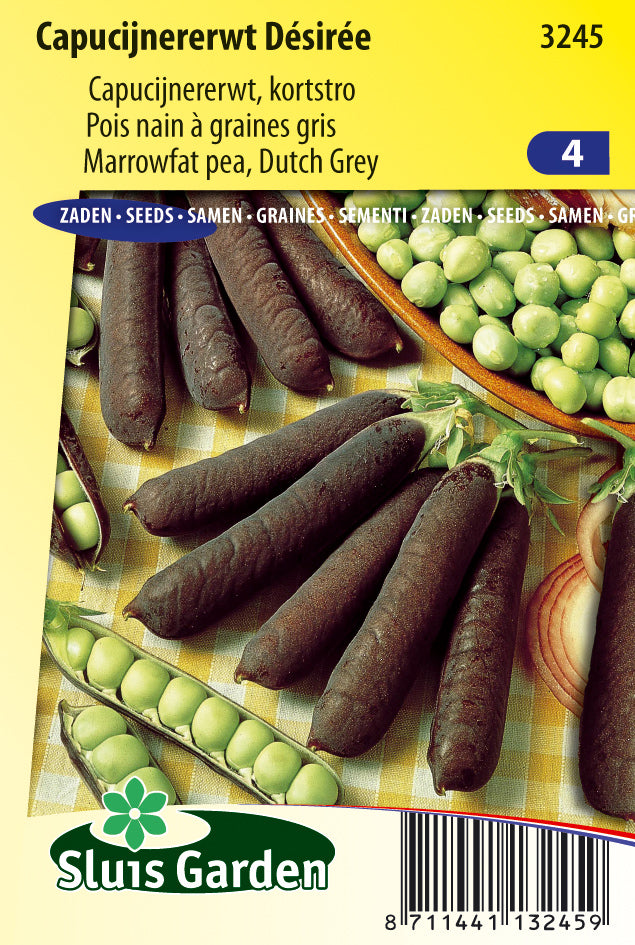1
/
of
1
Marrowfat pea Desiree
Marrowfat pea Desiree
Regular price
1.550 KWD
Regular price
Sale price
1.550 KWD
Unit price
/
per
Shipping calculated at checkout.
Couldn't load pickup availability
Here are general guidelines on how to grow marrowfat peas, and you can apply these principles to your specific variety:
**1. Planting Time:**
- Marrowfat peas are cool-season crops. Plant seeds in early spring or late summer for a fall harvest. They can tolerate cooler temperatures.
**2. Soil Preparation:**
- Choose well-draining soil with a slightly acidic to neutral pH (around 6.0 to 7.0). Peas prefer fertile soil rich in organic matter. Work in compost or well-rotted manure before planting.
**3. Sunlight:**
- Peas thrive in full sun but can tolerate partial shade, especially in warmer climates.
**4. Planting Seeds:**
- Sow pea seeds directly into the ground. Plant seeds about 1 to 2 inches deep and 2-3 inches apart in rows spaced 18-24 inches apart. Provide support for the vines to climb, such as a trellis or pea netting.
**5. Watering:**
- Keep the soil consistently moist, especially during flowering and pod development. Water deeply and regularly, particularly during dry periods.
**6. Fertilization:**
- Peas generally don't require heavy fertilization, but they benefit from a well-balanced fertilizer at planting time. Side-dress with additional fertilizer when the plants start flowering.
**7. Mulching:**
- Mulch around the base of the plants to conserve moisture, suppress weeds, and maintain a more even soil temperature.
**8. Support Structures:**
- Marrowfat peas are climbers, so providing a support structure is essential. This can be a trellis, pea netting, or stakes.
**9. Companion Planting:**
- Peas are good companions for many vegetables, including carrots, radishes, and cucumbers. Avoid planting them near onions or garlic.
**10. Pests and Diseases:**
- Keep an eye out for aphids, pea moths, and powdery mildew. Use insecticidal soap for pests and treat powdery mildew with a fungicide if necessary.
**11. Harvesting:**
- Harvest marrowfat peas when the pods are well-filled and the peas are still tender. Pick the pods regularly to encourage further production.
**12. Culinary Uses:**
- Marrowfat peas are versatile and can be used in various dishes. Enjoy them fresh in salads, stir-fries, or as a side dish. Dried peas can be used in soups and stews.
Adjust care based on your local climate and growing conditions. If you have specific information about the 'Desiree' pea variety, you can tailor these guidelines accordingly.
**1. Planting Time:**
- Marrowfat peas are cool-season crops. Plant seeds in early spring or late summer for a fall harvest. They can tolerate cooler temperatures.
**2. Soil Preparation:**
- Choose well-draining soil with a slightly acidic to neutral pH (around 6.0 to 7.0). Peas prefer fertile soil rich in organic matter. Work in compost or well-rotted manure before planting.
**3. Sunlight:**
- Peas thrive in full sun but can tolerate partial shade, especially in warmer climates.
**4. Planting Seeds:**
- Sow pea seeds directly into the ground. Plant seeds about 1 to 2 inches deep and 2-3 inches apart in rows spaced 18-24 inches apart. Provide support for the vines to climb, such as a trellis or pea netting.
**5. Watering:**
- Keep the soil consistently moist, especially during flowering and pod development. Water deeply and regularly, particularly during dry periods.
**6. Fertilization:**
- Peas generally don't require heavy fertilization, but they benefit from a well-balanced fertilizer at planting time. Side-dress with additional fertilizer when the plants start flowering.
**7. Mulching:**
- Mulch around the base of the plants to conserve moisture, suppress weeds, and maintain a more even soil temperature.
**8. Support Structures:**
- Marrowfat peas are climbers, so providing a support structure is essential. This can be a trellis, pea netting, or stakes.
**9. Companion Planting:**
- Peas are good companions for many vegetables, including carrots, radishes, and cucumbers. Avoid planting them near onions or garlic.
**10. Pests and Diseases:**
- Keep an eye out for aphids, pea moths, and powdery mildew. Use insecticidal soap for pests and treat powdery mildew with a fungicide if necessary.
**11. Harvesting:**
- Harvest marrowfat peas when the pods are well-filled and the peas are still tender. Pick the pods regularly to encourage further production.
**12. Culinary Uses:**
- Marrowfat peas are versatile and can be used in various dishes. Enjoy them fresh in salads, stir-fries, or as a side dish. Dried peas can be used in soups and stews.
Adjust care based on your local climate and growing conditions. If you have specific information about the 'Desiree' pea variety, you can tailor these guidelines accordingly.

